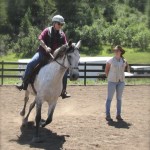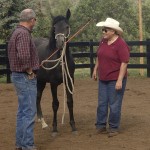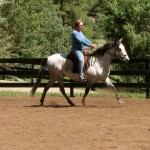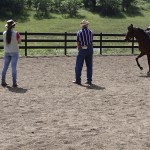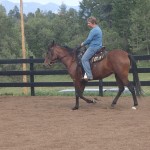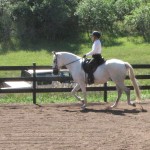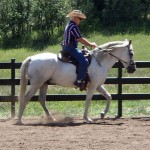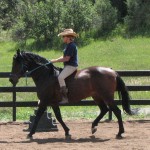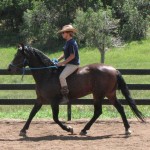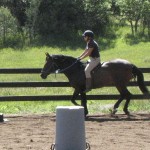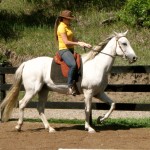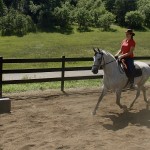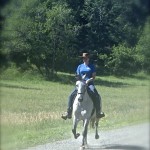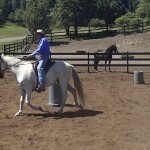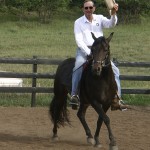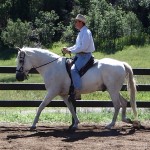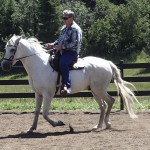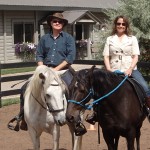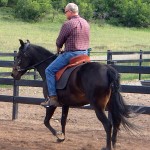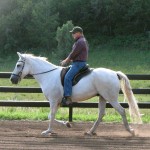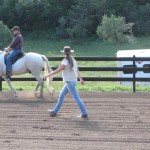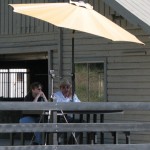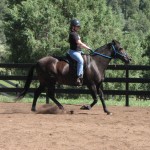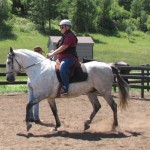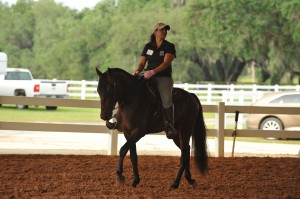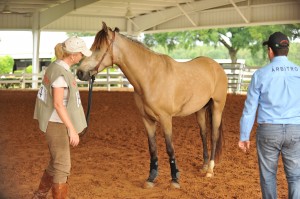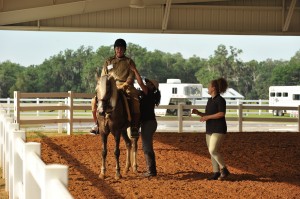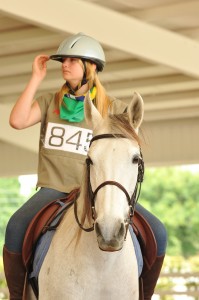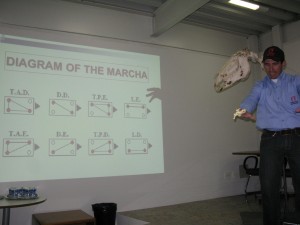If you build it, they will come and so they did! We had a wonderful experience hosting our own MM Clinic with Laura Patterson, a rider, trainer and vet from Brazil and Ann Staiger, gait genetics researcher from Cornell.
We have so many photos! We will show more at the end of the screen too.
But, here are some highlights for us.
- The diagram of the marcha! Gait Diagram
- Use the outside rein to get the horse to lift its head. The Marchador carries the head high when it is doing the gait correctly.
- The marcha de centro is a new term being used in Brazil. But when bred to the center, typically the Marchador will prefer one gait or the other. Picada or Batida. The horse falls into one naturally and is more consistent and less tired in that gait. So, the riders pick up on that and train in the best marcha.
- The marcha batida is very comfortable to ride IF you as the rider, can relax and enjoy the ride! Any tightness or stiffness in the hips or the shoulders will usually show up as a bounce in the saddle. The rider could be riding the same horse and prove this – we caught it on video too! (COMING SOON)
- Shorten the reins to set the gait and then relax. Ride with your hands more forward and with more contact with the horse than you may be used to.
- Make sure your pinky finger is not holding the rein, but off the rein. Your hand is naturally more relaxed and flexible in that position making it easy to make subtle movements with the rein.
- There is a fine line between the right level of collection and too much tightness or tension.
- For young horses, set the marcha gait and speed before ever training in the canter. The marcha can be the same speed as a canter. The horse does not need to canter at higher speed unless you ask for the canter.
- Tilt your hips so that your seat is more underneath you. Don’t push your feet out in front, just tuck your seat.
- Enjoy the ride! It’s a Mangalarga Marchador!
Ready for some videos that show great marcha gaits??? From Laura, shown during her presentation!
TEQUILA DA CADUCEU – YouTube Marcha Batida mare
Quebruto Elfar_(720p) Marcha Batida stallion
Safira JEA_(720p) Marcha Picada Mare
Please also read the articles from previous clinics that describe the marcha gait.
Ocala 2012 Part 1
Ocala 2012 Part 2

